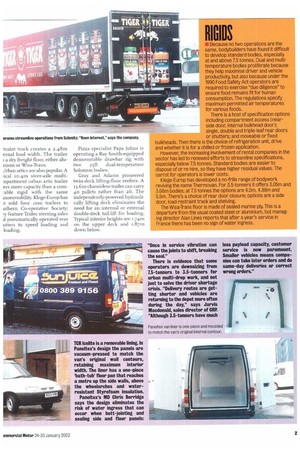INDS
Page 25

If you've noticed an error in this article please click here to report it so we can fix it.
SIBecause no two operations are the same, bodybuilders have found it difficult to develop standard bodies, especially at and above 7.5 tonnes. Dual and multitemperature bodies proliferate because they help maximise driver and vehicle productivity, but also because under the 1990 Food Safety Act operators are required to exercise "due diligence" to ensure food remains fit for human
consumption. The regulations specify maximum permitted air temperatures for various foods.
There is a host of specification options including compartment access (nearside door, internal bulkhead door); single, double and triple-leaf rear doors or shutters; and moveable or fixed bulkheads. Then there is the choice of refrigeration unit, drive and whether it is for a chilled or frozen application.
However, the increasing involvement of rental companies in the sector has led to renewed efforts to streamline specifications, especially below 7.5 tonnes. Standard bodies are easier to dispose of or re-hire, so they have higher residual values. The carrot for operators is lower costs.
Klege-Europ has developed a no-frills range of bodywork reviving the name Thermovan. For 3.5-tonners it offers 3.05m and 3.66m bodies; at 7.5 tonnes the options are 4.0m, 4.88m and 5.5m. There's a choice of rear door closure; options are a side door, load-restraint track and shelving.
The Wisa-Trans floor is made of sealed marine ply. This is a departure from the usual coated steel or aluminium, but managing director Alan Lines reports that after a year's service in France there has been no sign of water ingress.












































































































































